There’s a trail through the rainforest, and you know there are curious kinkajous above you but they’re so hard to spot. Best look for their eyes, which are impossibly large and follow you as walk the path below. Chestnut brown agoutis scamper, and you think rabbit? Chinchilla? And what are those crazy fruit trees, with spiky red fruits by the hundreds. Are those rambutans? Could those little green mounds be miniature bamboo trees? You’re wondering about the tiny white camelia blossoms along the path until someone says, improbably, that they are on young Assam tea trees. In the rainforest? The yoga pavilion is said to be nearby, but its silence is counterbalanced by birdsong and chirping. At last you spot your bedroom in a dome, the latest addition to the Finca Luna Nueva Lodge campus. You’re home.
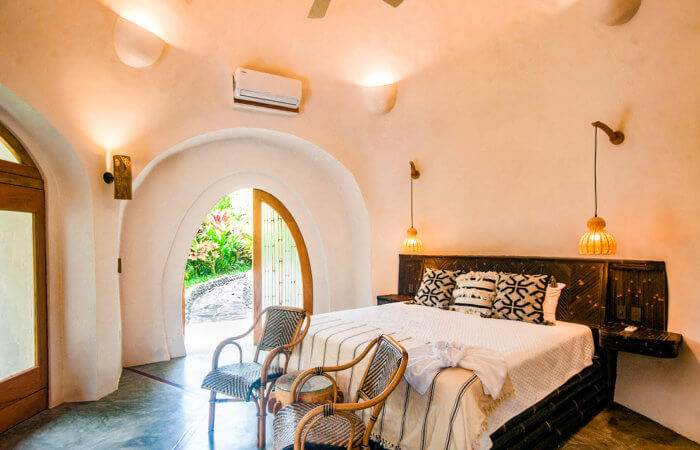
A door opens to your suite, featuring Brian Erickson’s exquisite black bamboo bed

View toward the deck and private bath
Finca Luna Nueva’s Dome opens this first week of January, 2020, and we’re thrilled to provide this option to our guests. It’s surrounded by gardens designed by our farm’s founder, Steven Farrell, with input from brothers Carlos and Walter Arias and our farm team. Even Kimberly, Terry, and I offered some thoughts about the gardens, and just weeks later the gardens are already spectacular.

Carlos Arias led the implementation of the garden design 
Johnny Vega and Jose Castro were champions, as always 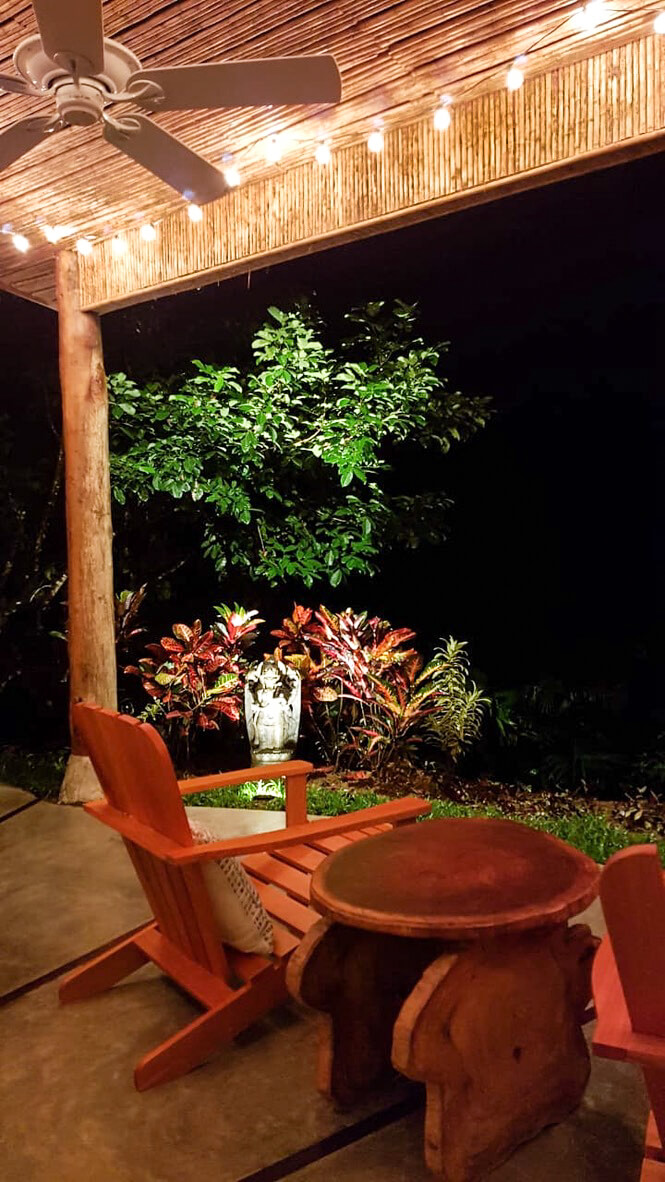
The night views from the patio show off the statuary and gardens
The bedroom opens to an arched connection to the bath, which itself opens fully to the glories of the rainforest.
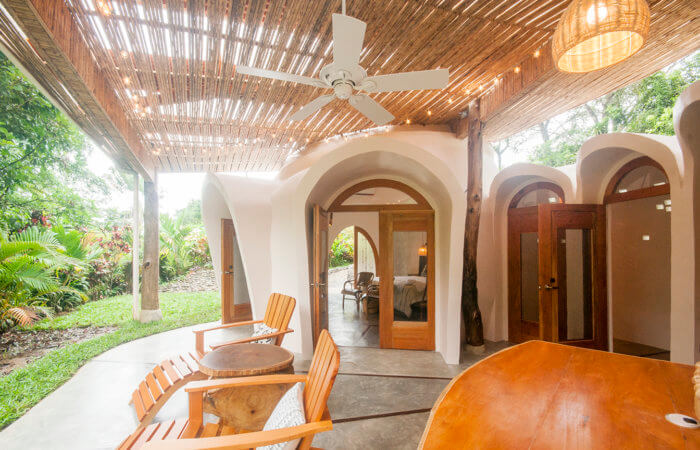
The covered deck

The domed bathroom opens to the rainforest
At night, the lights from the Dome radiate through little glass cutaways in the walls, a Terry touch adding whimsy and twinkle.
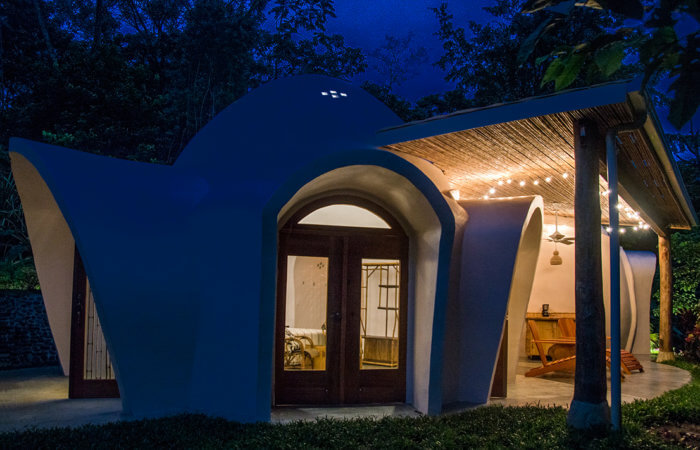
Night view toward the deck 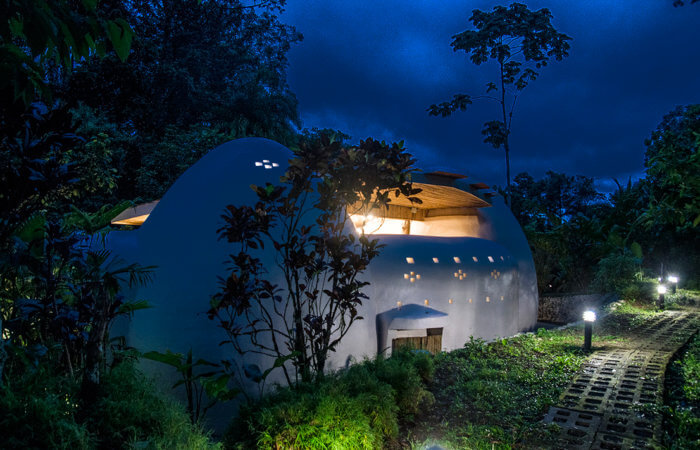
Night view along the pathway
And this is all just steps away from the pool and lounge, combining total “honeymoon” privacy with easy access to all our facilities.
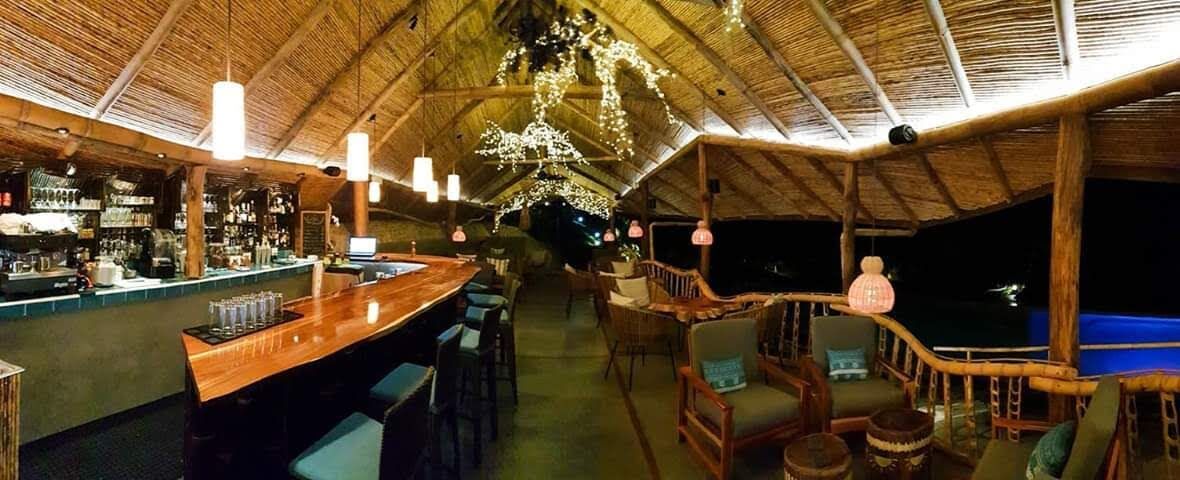
But a Dome? In the rainforest? How did we come up with that unusual design concept? Turns out the concept came to us – literally. Our neighbors to the west, the Brave Earth Community, recently offered a course on constructing “aircrete” domes. The aircrete dome instructors came from an organization called Domegaia, the brainchild of Hajar Gibran, the great nephew of Kahlil Gibran. Hajar is the author of The Return of the Prophet, the sequel to Kahlil Gibran’s masterpiece The Prophet.
This from the website of Domegaia: “While building The Gibran Center in Thailand, Hajjar developed an innovative way of building beautiful low cost AirCrete domes that has gained international recognition. He founded DomeGaia in 2014 to answer the global demand for his innovative low-cost housing designs.” We at Finca Luna Nueva both participated in the Brave Earth course and witnessed the construction of several splendid domes on the Brave Earth campus, so our inspiration for the dome concept came from just up the path to our neighbor.
We forged a great connection with one of the course instructors, Rafael Bravo, and set out to create with him a novel form that would resonate with our rainforest world.
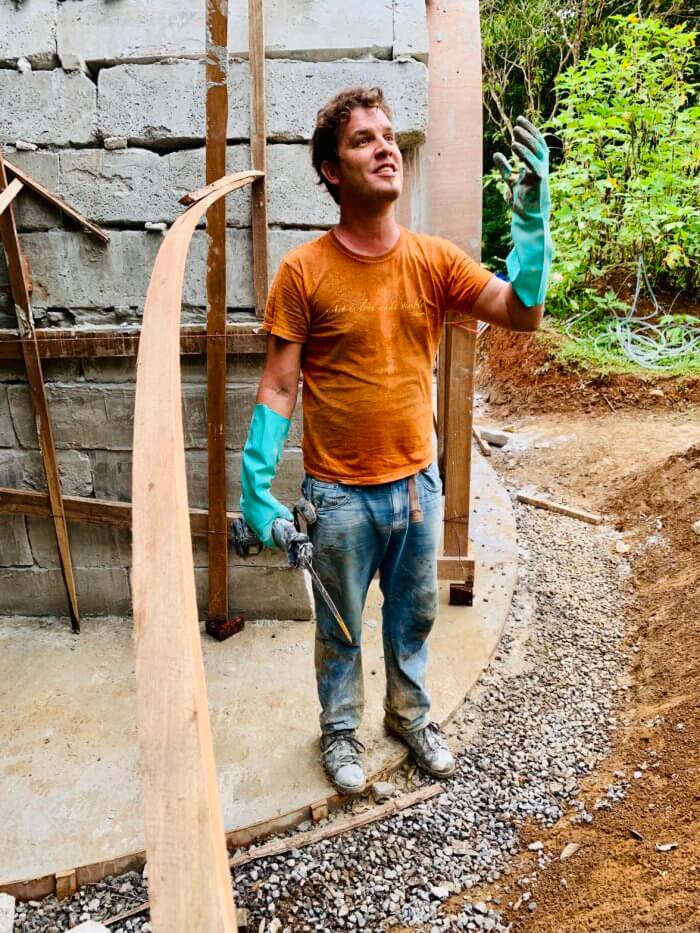
Rafa Bravo, our aircrete dome designer
Rafa was the perfect design partner: he knew the nuts and bolts (except there aren’t any) of aircrete construction, he’d successfully built domes around the world, and he was just loco enough to roll with our crazy design challenges. Plus, he used to design toys as a child and grew up to become an acrobat, juggler, chef, and clown. He was the perfect counterpart to Terry’s artistic elegance, and with our encouragement he created a Fibonacci-like snail design.
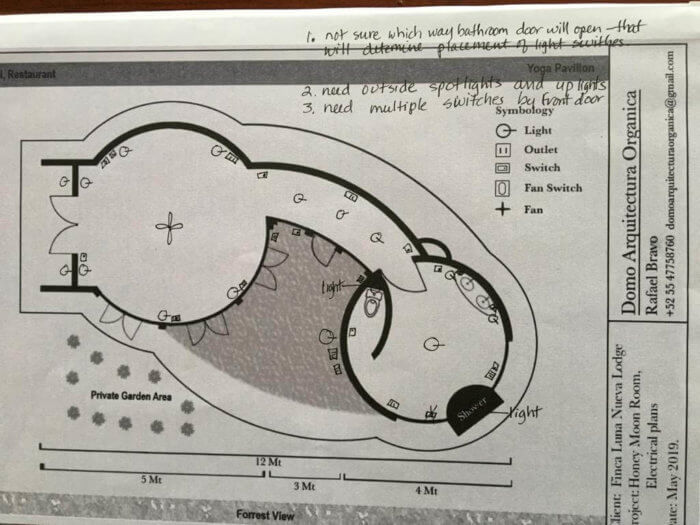
But it’s a dome in the rainforest, some might say. How does a dome fit into the natural environment of a neotropical jungle? Well, you could ask the same thing about a cube – it’s not like you see lots of perfectly square or rectangular structures out in the rainforest. But let’s dive deeper into rainforest design and see if we can build a “biomimicry” case for a dome. First, there was this leaf we found a few years ago bearing the design scheme of some artistic insects.
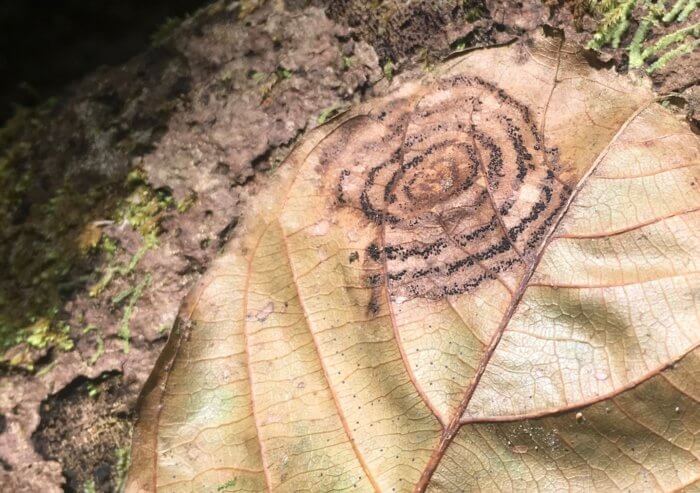
Insect design plan?
Doesn’t that somewhat remind you of Rafa’s Fibonacci design? Okay, maybe that’s a stretch. But consider our mariola bees, those Little Angels of the Forest who make the finest medicinal honey in the world. Unlike European honeybees who create sharply angular honeycombs with hexagonal building blocks, out in our forest the stingless mariola bees build domes!
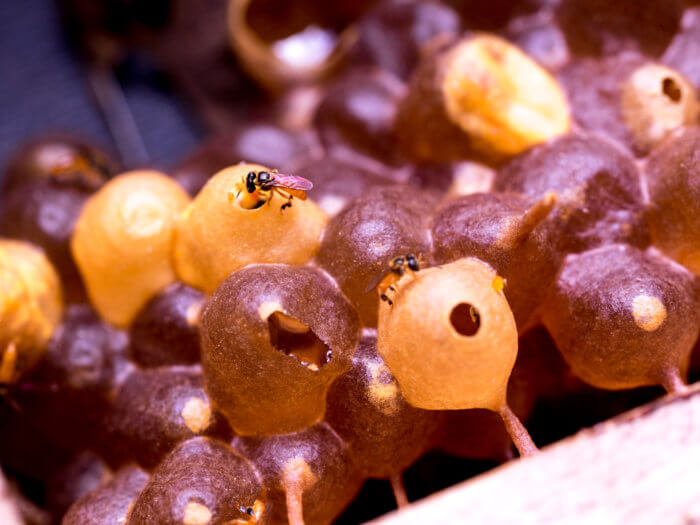
Mariola domes, Byzantine chambers of honey and pollen
Or consider the termites of our ecosystem. In drier zones around the world you’ll find termites underground, seeking protection from predators in the depths of the soil. Here, bursts of rain might drench their colonies, so they build, well, domes up in trees.
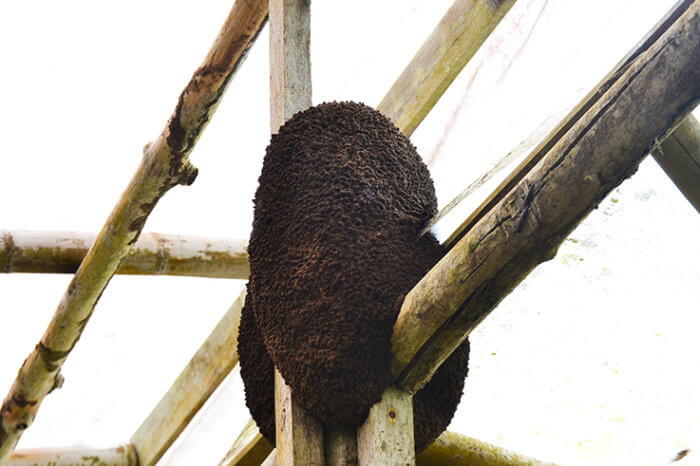
And then there are creatures who live in portable domes – our many turtle friends. You’ll find them in our streams, rivers, and ponds, like this snappy family who warmed up their domes in the sunshine.
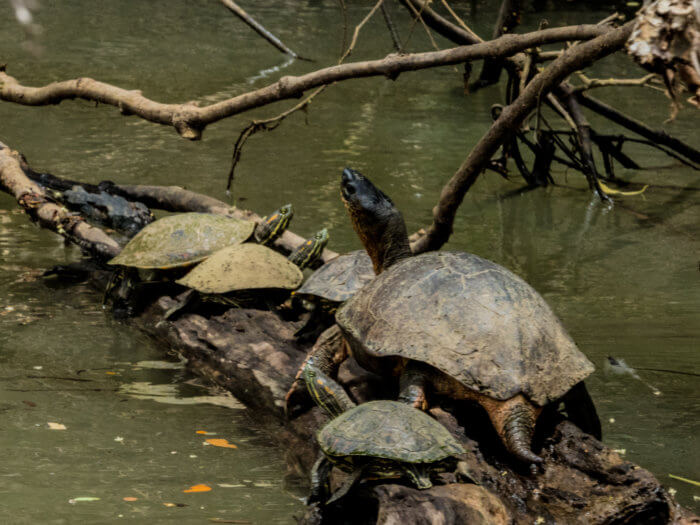
The Snappy Family
There are inverted domes above you in the rainforest, such as this well-appointed hummingbird nest.
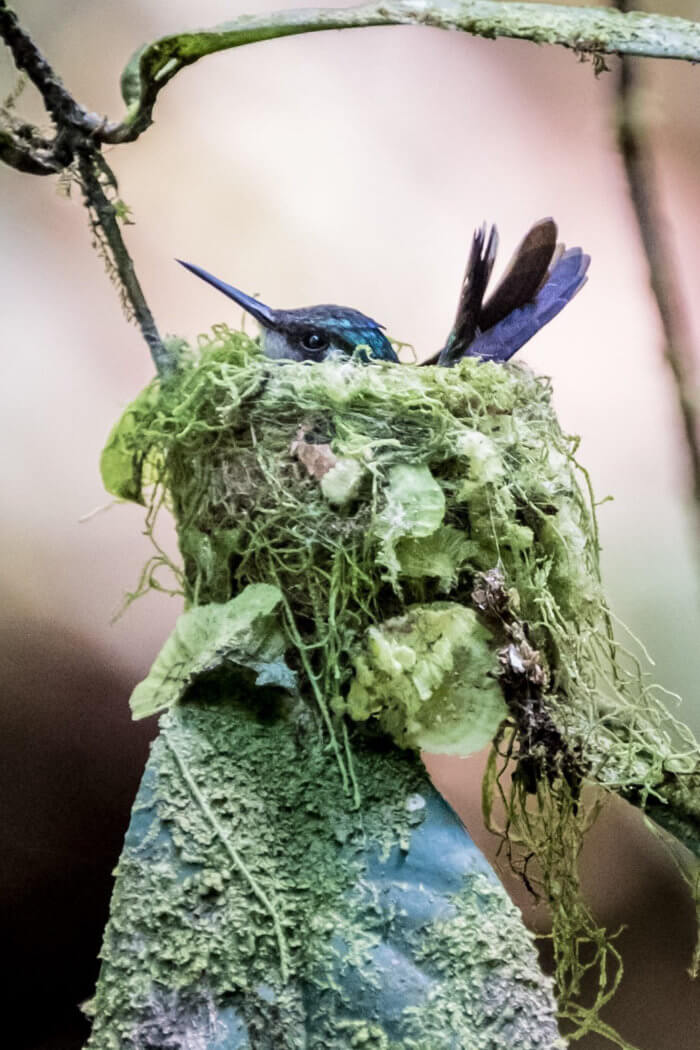
Photographer Tom Tussey captures the moment along the Rio Chachagua
And the kingdom of fungi – it’s all about domes.
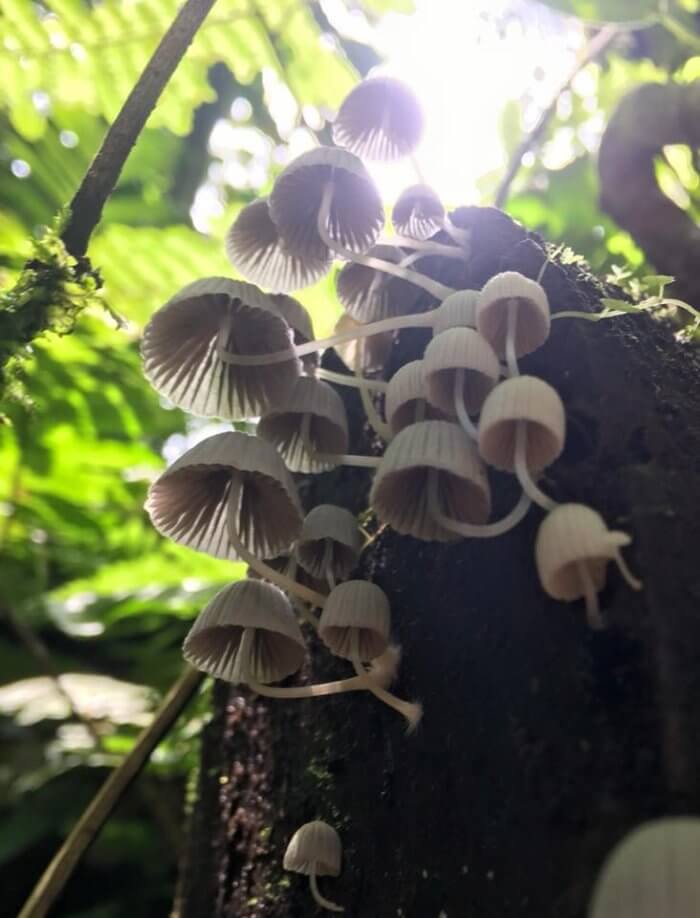
Mushroom fruiting bodies near the stream flowing behind our reception
We are related to all of life on Earth, but we feel more closely connected to primates such as the golden-mantled howlers who live up in the forest canopy. Have you seen the canopy? It’s one dome after another, endlessly it seems, stretching from our lodge for twenty-five miles across the Children’s Eternal Rainforest to the continental divide in Monteverde. Domes define our landscape, and our primate cousins live tucked inside their geometry.
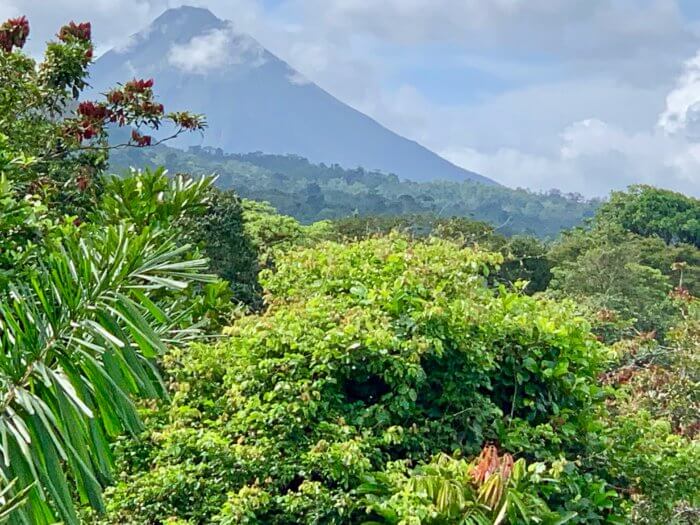
View from our new birding tower 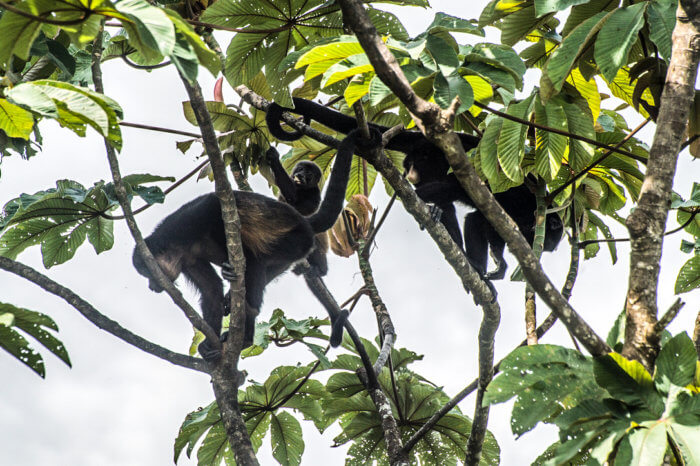
Howlers roam through the domes
I’m a recovering attorney so I suppose I’m presenting my case to you, the jury. I suggest the evidence is overwhelming – our dome design fits gracefully into our natural order. None other than Janine Benyus, the co-founder of the Biomimicry Institute, spent time at our farm in 2017 being filmed for the Leonardo DiCaprio/Leila Conners documentary Ice on Fire. Our Brave Earth neighbors count among their members our dear friend Bryony Schwan, the co-founder and former Executive Director of the Biomimicry Institute. We farm regeneratively like a forest, so it’s exciting to be building biomimetically, like many of the creatures in our forest.
Now back to the aircrete itself. Aircrete ain’t pretty, at least in its raw form. It’s a stew created out of two parts concrete and eight parts soap suds. Yes, it’s made of bubbles, and that means a few things. First, it uses only a fraction of the concrete of normal structures, materially reducing the dreadful environmental impact of normal concrete construction. Second, it’s much less expensive, opening up this construction technique to masses of people who may have lacked the resources to build conventionally. Third, while not quite light as a feather, aircrete doesn’t weigh much and is easy to shape and mould. Fourth, it invites creativity and is a forgiving construction material. If you don’t like the way something looks, just take a spoon and carve away. If you want to put in some new wiring, carve away. Fifth, aircrete walls are strong in the nature of a surfboard. While aircrete itself has little tensile strength, once wrapped in cloth it will support enormous weight. Plus, once the final bricks are inserted into the crown of the dome, that structure imparts self-reinforcing stability.
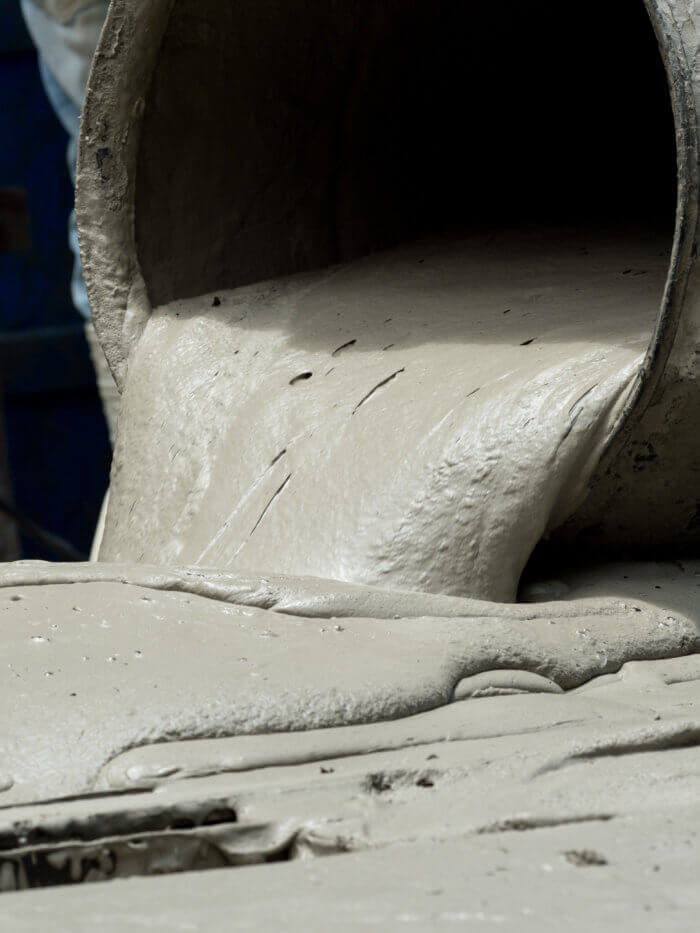
The aircrete soup – 80% soap suds 
Andrey Carvajal, our senior builder, mixing up a small batch 
The form into which we poured the aircrete to create the blocks 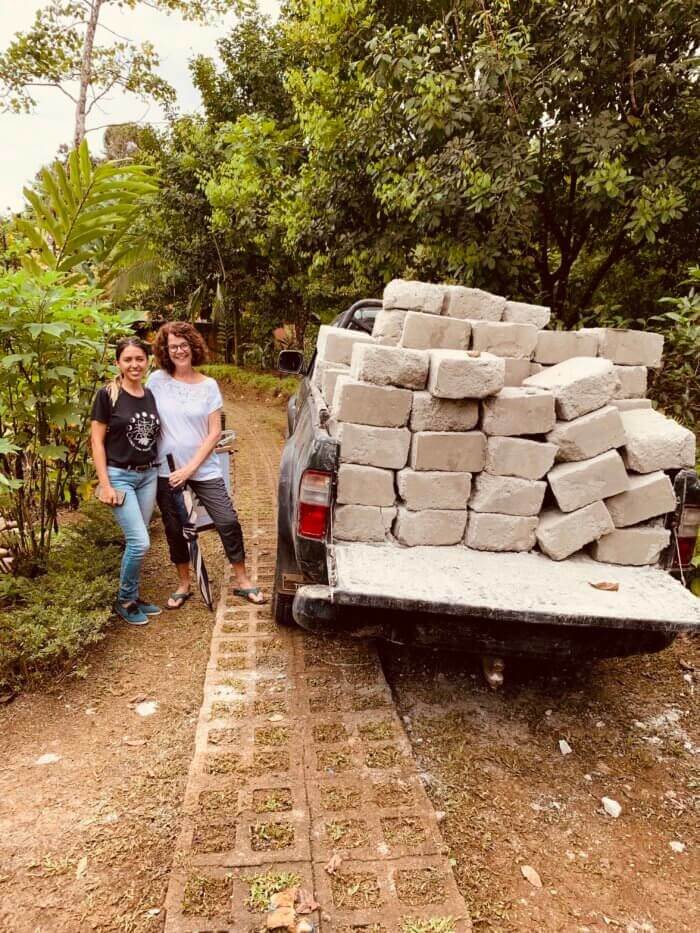
Kimberly and Terry with the aircrete blocks 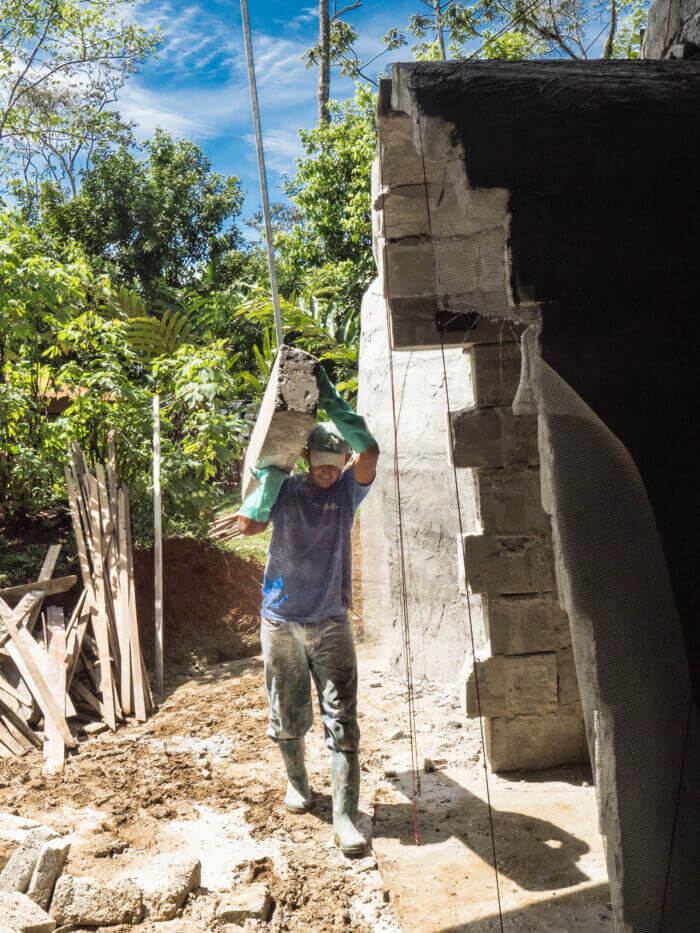
Easy to work with – lightweight 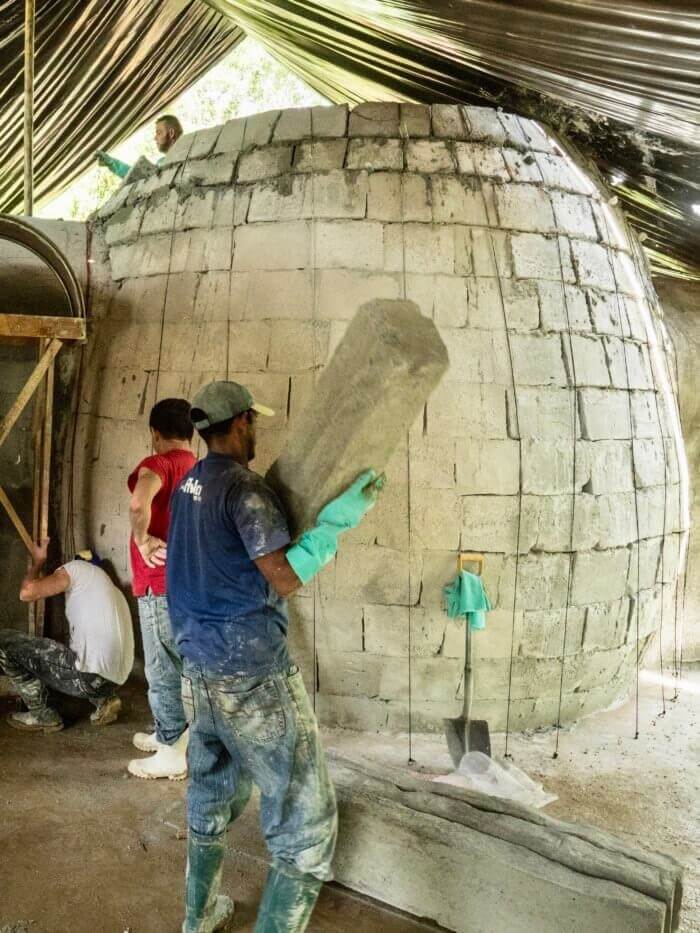
Carrying a long slab of aircrete 
Andrey working on the master suite 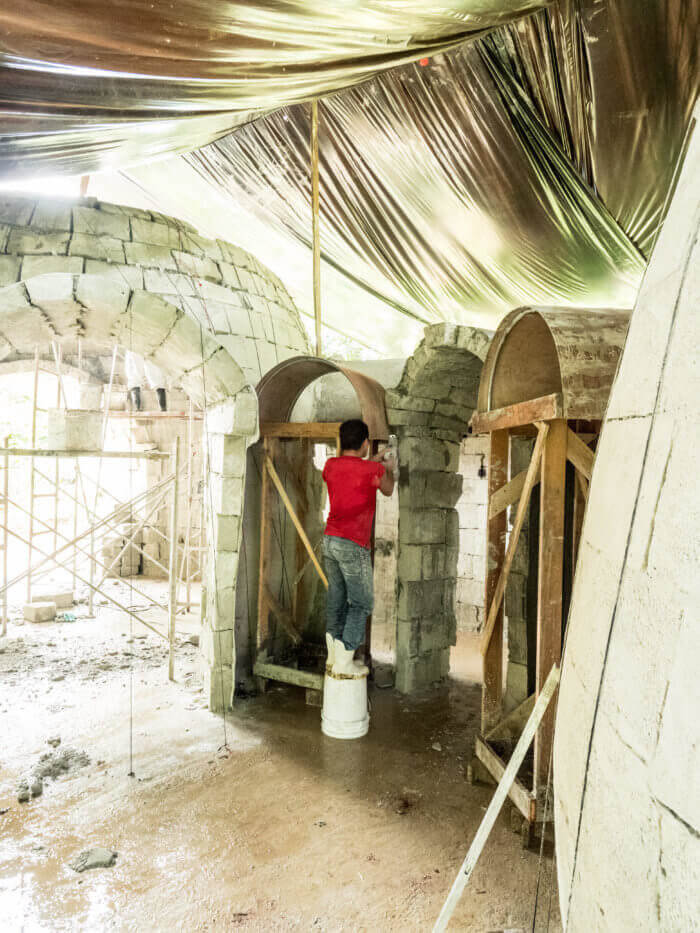
Creating the archways for the patio 
Rafa Bravo, Terry Newmark, and Brian Erickson working on details 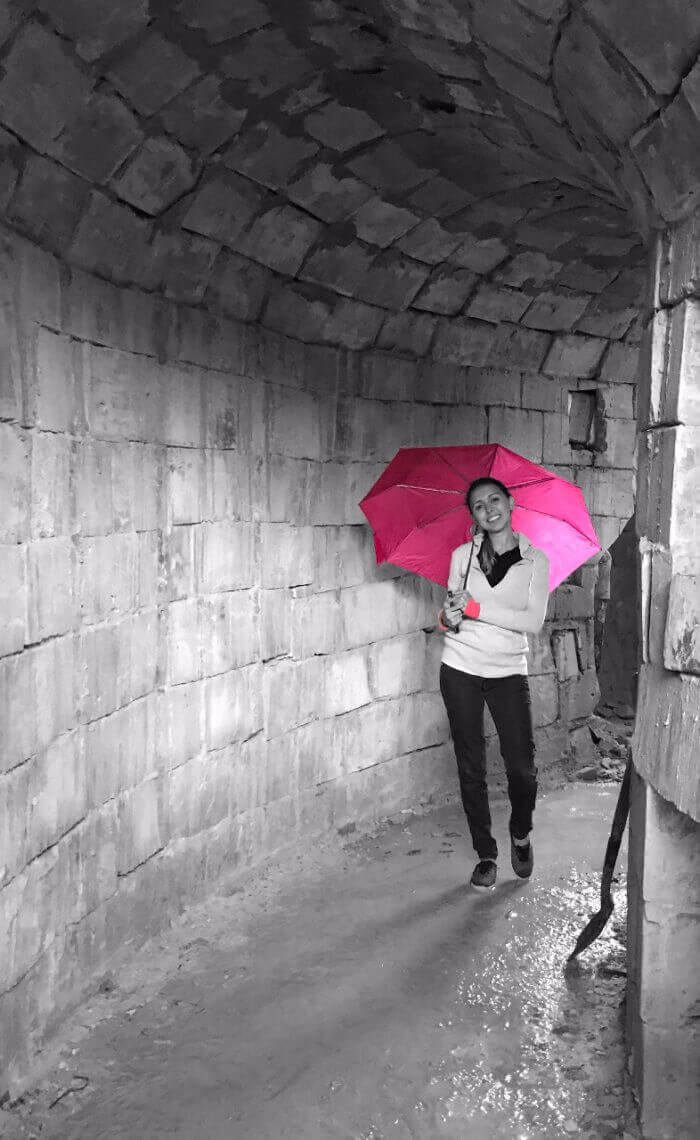
Kimberly having some fun during construction 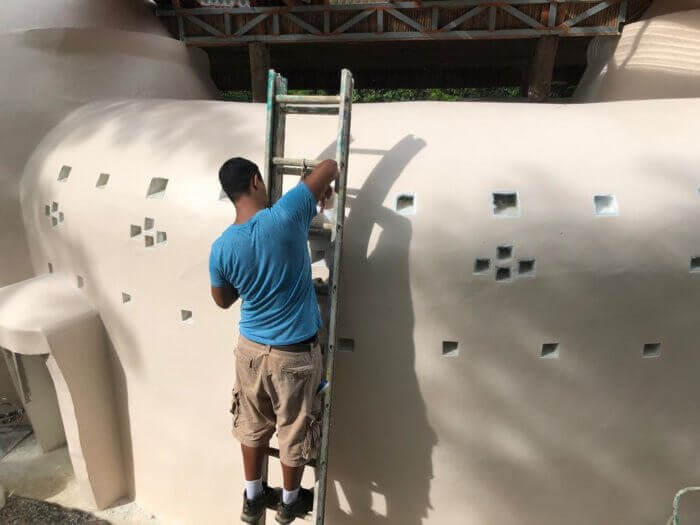
Detail work toward the end of construction 
Our electrician Dan Schild, who became an expert in spooning out pathways for wiring. 
Bamboo maestro Brian Erickson creating a blonde bamboo coffee cabinet for our Dome
The joyous work is now done, and we’re all proud of our biomimetic and ecological Dome. And we believe that it is the most beautiful room in any lodge anywhere! We welcome you to our new creation, and hope you, like our birds, stingless bees, turtles, and monkeys, find our Dome to be your perfect home in the rainforest. Pura Vida!
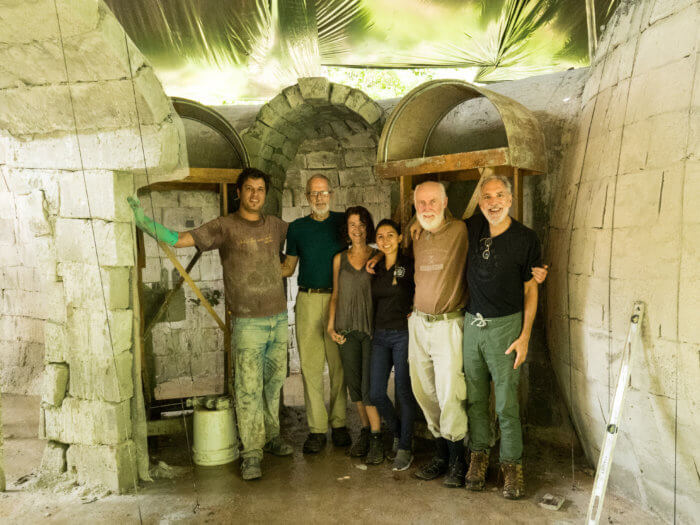
Rafa, Brian, Terry, Kimberly, Steven, and Tom
For more information on how to reserve the dome for your next rainforest vacation, click here.

